Introduction
Updated 7/29/2011: Added WNDR4000 routing throughput info
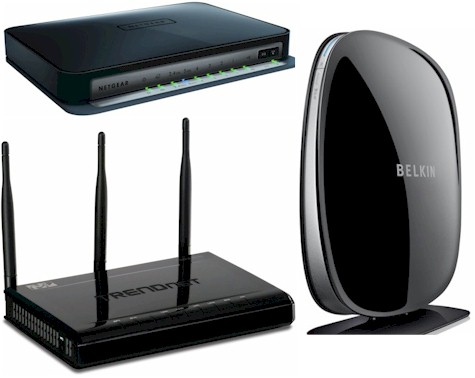
Long time readers know that I’ve held off investing in the ability to properly test three stream 802.11n routers. I recently relented, however, due to shame or the realization that manufacturers are bound and determined to foist yet another technology-in-development upon gullible consumers and someone has to test these things properly.
Either way, I recently cowboyed up and purchased a Lenovo x220i notebook with Intel Centrino Ultimate-N 6300 card and three antenna option. Actually, I purchased two x220i’s. The first came with the 6300 card, but not the three antenna option. Unfortunately, I didn’t check this until after the 21 day return period passed. So I had to order and pay for a second one and am waiting for the full refund on the first RMA’d one. (Yes, I verified that the replacement x220i has the 6300 card and three antennas connected.)
So now I no longer have an excuse for not testing three stream operation on routers that support it. I recently revised the wireless test process to reflect the longer test times that these products require.
Before I get to the results, a word about the settings available on three stream routers, for those of you who haven’t yet put hands on one. Three stream routers don’t really have a way to put them into two-stream mode. Some have the ability to set the MCS (Modulation and Coding Scheme) rate. But I’m not going to rely on that until I get an understanding from manufacturers exactly how it operates.
Just like dual-stream routers, three streamers only let you set the mode to some mix of 802.11 a,b,g and n (you get 802.11a only with dual-band products) and set 20 MHz, Auto 20/40 or 40 MHz channel bandwidth modes. Of course, you can set the channel, too.
The maximum link rate you see reported by your 802.11n client depends on the number of streams it supports and any bandwidth mode limitations that the client driver allows. In other words, a two-stream client associated with a three-stream N router can only operate at two-stream rates.
Table 1, borrowed from our Wireless FAQ, has a quick rundown of maximum link rates. A full list of 802.11 rates is here.
| Product Technology | Maximum Link Rate (Mbps) | |
|---|---|---|
| 20 MHz B/W | 40 MHz B/W | |
| 802.11b | 11 | N/A |
| 802.11g | 54 | N/A |
| Enhanced 802.11g (SuperG) |
54 | 108 |
| 802.11n – 1 stream | 65 | 150 |
| 802.11n – 2 stream | 130 | 300 |
| 802.11n – 3 stream | 217 | 450 |
Table 1: Maximum 802.11 link rates
Now without further ado, let’s get to the testing. We’re going to look at three routers I’ve previously tested with a two-stream client: Belkin’s N750 DB, NETGEAR’s WNDR4000 and TRENDnet’s TEW-691GR.
Belkin N750 DB
I wasn’t very impressed with the two-stream performance of the Ralink RT3883F 3X3 N radio in Belkin’s latest top-of-line router. So I didn’t have very high hopes for its three-stream performance and testing proved this out. The Wireless Performance table in Figure 1 shows results for both the Belkin and NETGEAR WNDR4000, which I’ll get to next.
N routers usually can’t reach to my low signal test locations E and F in two stream mode and their performance is no better with three stream clients. In fact, the same fallback mechanism applies in three stream as in two. So at low signal levels, your fancy three stream router has transmogrified itself back into operating like your old 802.11g or even 11b router!
The summary table in Figure 1 shows maximum throughput in 20 MHz bandwidth mode in the 35 – 45 Mbps range—even lower than many two-stream routers! I think the reason is the constant link rate switching that I observed during testing, with link rates even in Location A rarely reaching above 300 Mbps.
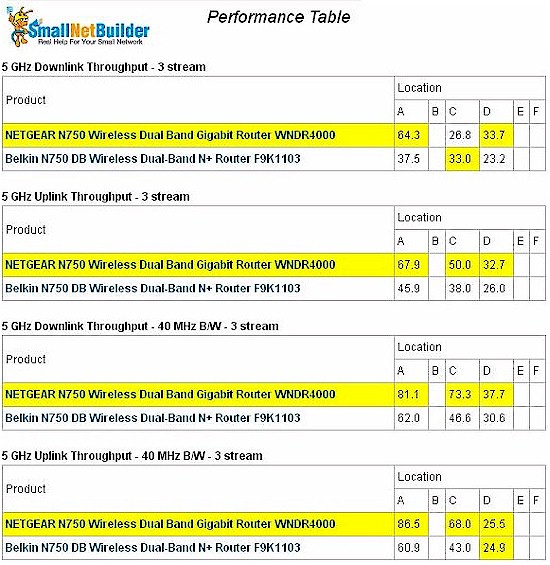
Figure 1: Three stream performance – 5 GHz band
Switching to Auto 20/40 bandwidth mode was a bit better, goosing thoughput to around 60 Mbps. But this is more typical of what I see in dual-stream products.
The IxChariot plot in Figure 2 shows some attempt by the router and client to move to higher throughput. But such efforts were generally short lived.
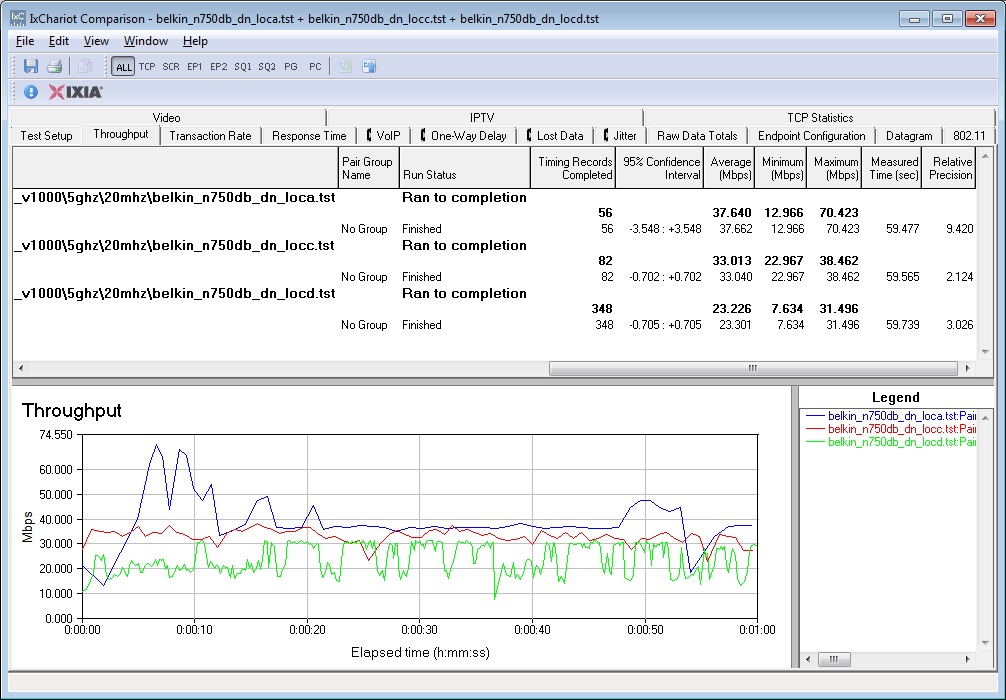
Figure 2: Belkin N750 DB IxChariot plot summary – 5 GHz, 20 MHz mode, downlink, three stream client
I was able to measure 101 Mbps of total throughput running simultaneous up and downlink tests in location A in Auto 20/40 mode.
Here are links to the other 5 GHz plots if you’d like to check them out.
- 5 GHz / 20 MHz uplink
- 5 GHz / 20 MHz up and downlink
- 5 GHz / 40 MHz downlink
- 5 GHz / 40 MHz uplink
- 5 GHz / 40 MHz up and downlink
NETGEAR WNDR4000
Like Cisco’s Linksys E4200, NETGEAR’s WNDR4000 uses a Broadcom-based design. In fact, the two products are very similar. Aside from 8 MB of flash vs. 16 MB in the E4200, different antennas and firmware, the WNDR4000 and E4200 are very similar, both using a Broadcom BCM4331 Single-Chip 802.11n Dual-Band 3×3 for the 5 GHz radio.
5 GHz band tests using a dual-stream client showed better overall performance in 40 MHz bandwidth mode (or Up to 450 Mbps mode in NETGEAR-speak) than in 20. Best case 5 GHz performance was 83 Mbps running downlink in 40 MHz bandwidth mode at Location A and I measured 111 Mbps total throughput in 40 MHz mode running simultaneous up and downlink tests at Location A.
I duplicated Figure 1 below so that you don’t have to click back to the previous page. You can see generally higher throughput in the stronger signal locations A and C from the WNDR4000. But highest throughput measured was 87 Mbps running uplink in Location A in 40 MHz bandwidth mode, only slightly higher than measured with the dual-stream client.

Figure 1 (duplicate): Three stream performance – 5 GHz band
The IxChariot plot in Figure 3 shows relatively steady throughput, which in turn yielded higher average throughput for the one minute test runs. Unlike the Belkin, the NETGEAR’s link rates didn’t move around much, which also helped produce higher average throughput. Even in Location A, however, I did not get a steady 450 Mbps link rate.
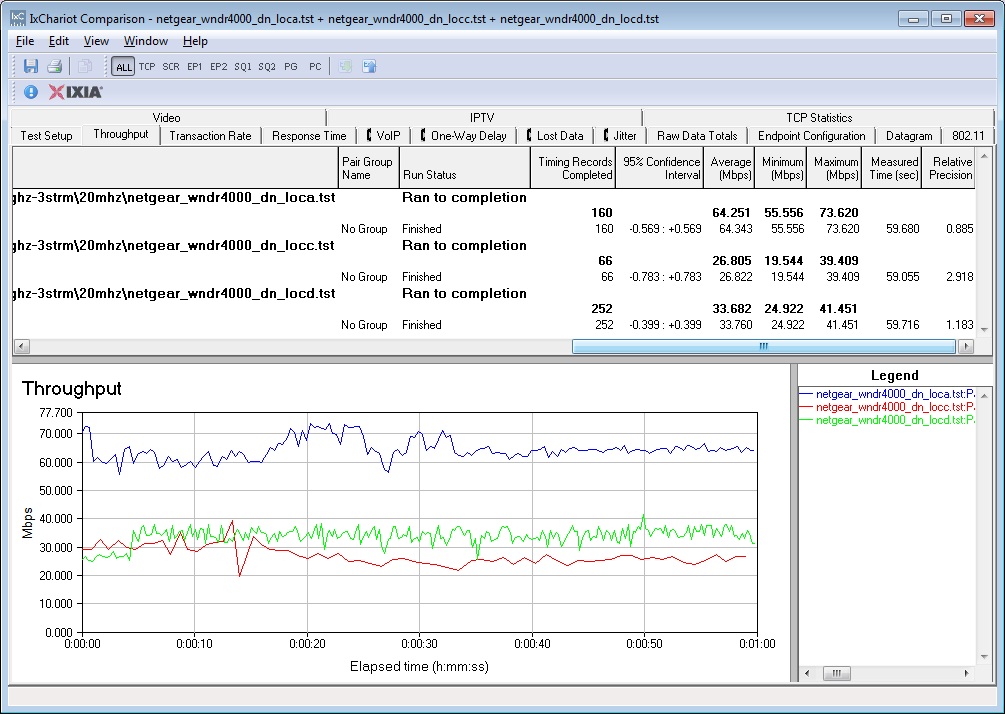
Figure 3: NETGEAR WNDR4000 IxChariot plot summary – 5 GHz, 20 MHz mode, downlink, three stream client
Running simultaneous up and downlink tests in location A in Auto 20/40 mode once again produced the highest total throughput of 135 Mbps.
Here are links to the other 5 GHz plots for your perusal:
- 5 GHz / 20 MHz uplink
- 5 GHz / 20 MHz up and downlink
- 5 GHz / 40 MHz downlink
- 5 GHz / 40 MHz uplink
- 5 GHz / 40 MHz up and downlink
Updated 7/29/2011
NETGEAR had asked me to retest the router with its recently issued 1.0.0.66 firmware, which is supposed to improve routing throughput. The results in Table 2 show that both WAN to LAN and LAN to WAN routing throughput has indeed been improved.
| Test | V1.0.0.66 | V1.0.0.60_8.0.49 |
|---|---|---|
| WAN to LAN | 676 Mbps | 351 Mbps |
| LAN to WAN | 624 Mbps | 366 Mbps |
| Total Simultaneous | 701 Mbps | 423 Mbps |
| Max Simultaneous Connections | 4096 | 4096 |
Table 2: WNDR4000 routing throughput
TRENDnet TEW-691GR
The last three-stream router I had in the SmallNetBuilder closet was TRENDnet’s TEW-691GR. TRENDnet has been pretty aggressively pursuing the three stream N market, shipping the TEW-691GR and beating the bigger names to market with the first three-stream N router.
Like the Belkin N750 DB, the TEW-691GR uses a Ralink RT3883F 3X3 N radio, but set for the 2.4 GHz, not 5 GHz band. So the performance chart in Figure 4 doesn’t have any other products to compare to because all other current three-stream routers support it for 5 GHz only. The exception is TRENDnet’s TEW-692GR, which patiently awaits my test of its simultaneous three-stream dual-band capabilities.
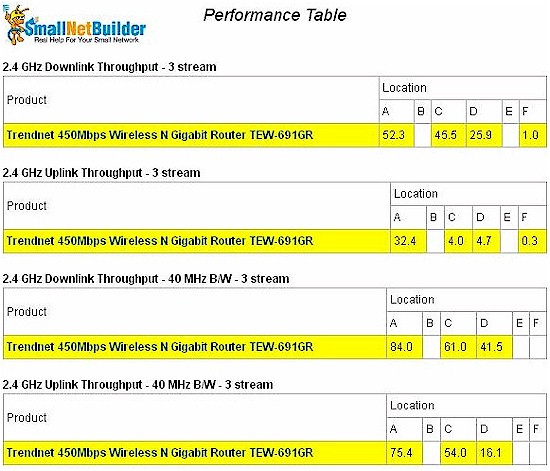
Figure 4: Three stream performance – 2.4 GHz band
Given the impressive results I saw when I tested the 691GR with TRENDnet’s TEW-687GA 450Mbps Wireless N Gaming Adapter, I expected similar behavior with the Intel 6300 client. Silly me.
Figure 5 from the TEW-687GA review summarizes 20MHz downlink tests. The top throughput of 108 Mbps was pretty impressive. Even more impressive was the 134 Mbps obtained switching to 40 MHz bandwidth mode!
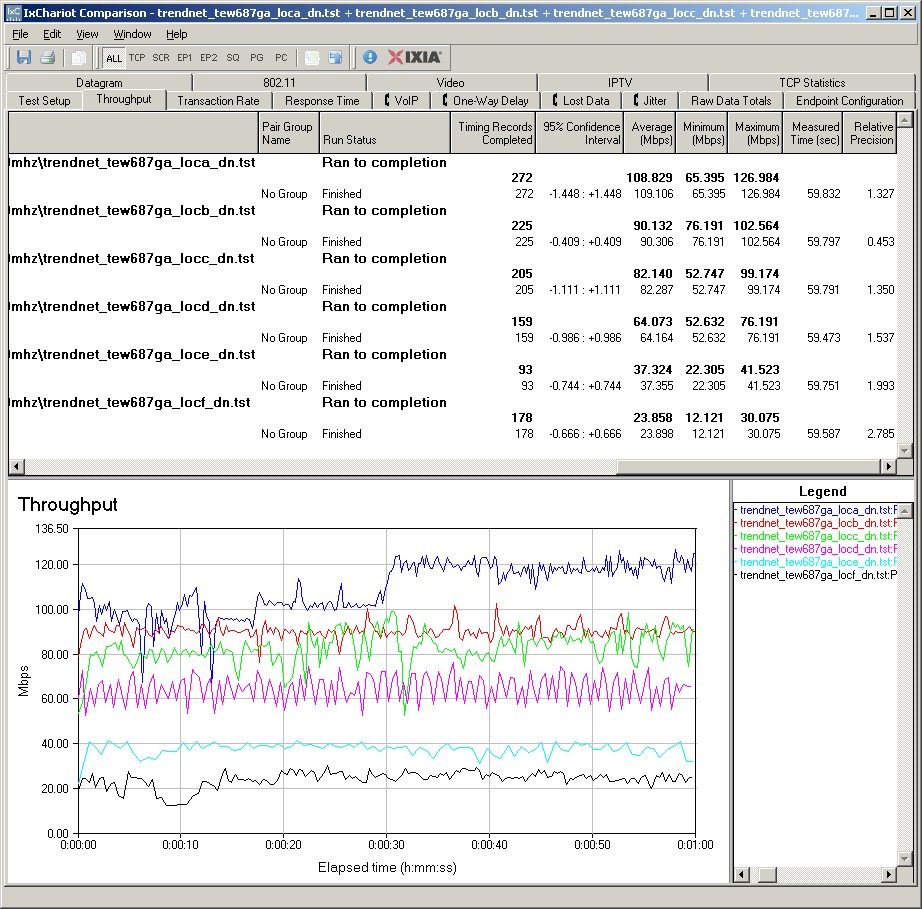
Figure 5: TRENDnet TEW-691GR IxChariot plot summary – 2.4 GHz, 20 MHz mode, downlink, three stream client
In contrast, the IxChariot plot in Figure 6 presents a pretty sorry sight. Best case throughput of 52 Mbps is only half that obtained using the TEW-687GA, with high throughput variation helping to keep average throughput down.
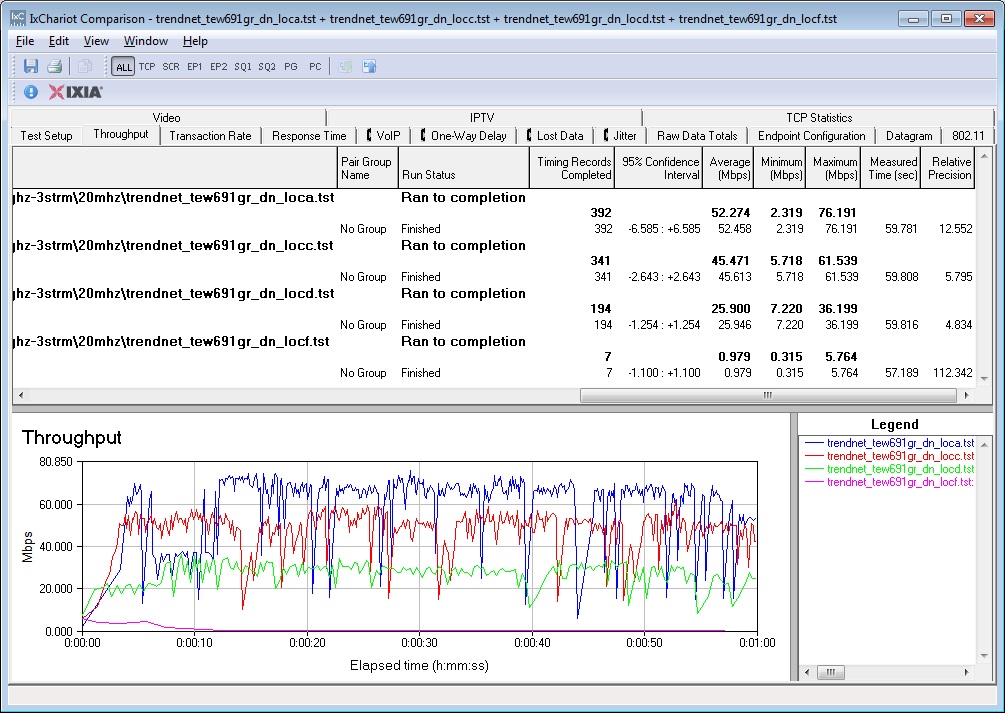
Figure 6: TRENDnet TEW-691GR IxChariot plot summary – 2.4 GHz, 20 MHz mode, downlink
Uplink was even worse, producing the lowest results seen in this roundup. Take a look at Figure 7. Even repeating the dismally low throughput runs didn’t help.
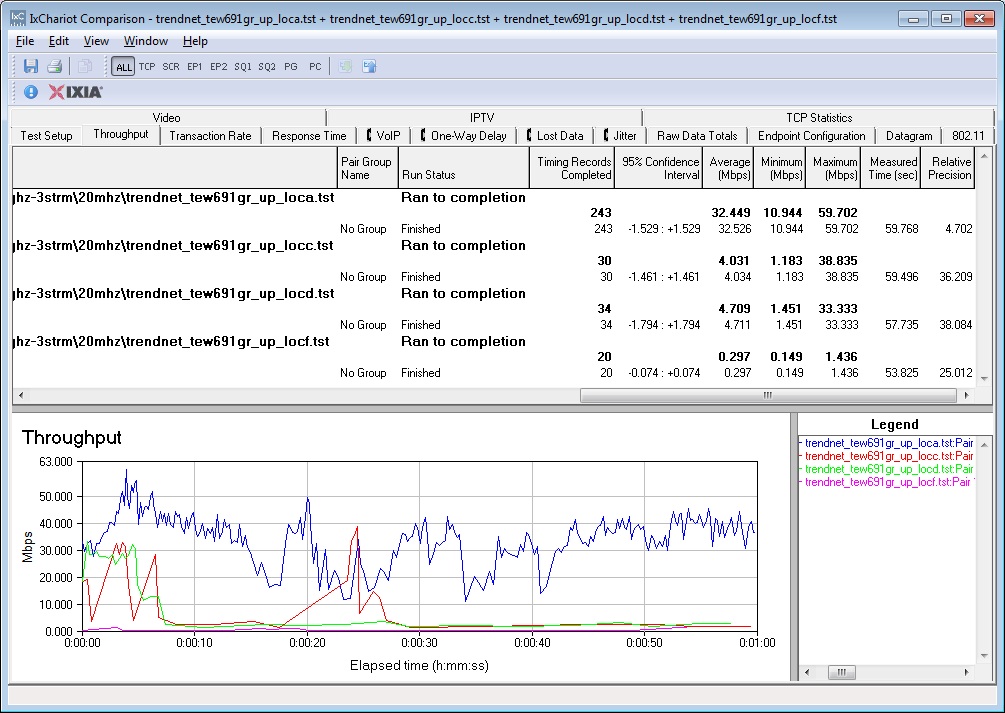
Figure 7: TRENDnet TEW-691GR IxChariot plot summary – 2.4 GHz, 20 MHz mode, uplink
At least running simultaneous up and downlink tests in location A in Auto 20/40 mode managed to rustle up 107 Mbps of total throughput.
Here are links to the other TRENDnet plots:
- 2.4 GHz / 20 MHz up and downlink
- 2.4 GHz / 40 MHz downlink
- 2.4 GHz / 40 MHz uplink
- 2.4 GHz / 40 MHz up and downlink
Closing Thoughts
I said right in the article tease that these tests produced pretty disappointing results, especially in light of the optimistic view the combination of TRENDnet TEW-691GR and TEW-687GA previously produced. I think, however, there’s a clue to the reason why in those very results: the TEW-691GR and TEW-687GA both use the same chipset.
In the early "draft" days of 802.11n, the technology was developing so quickly that for best results, you had to match clients and AP / routers using the same manufacturer’s chipsets for best performance. As 11n matured with successive chipset generations and driver tunings, this recommendation became less important. It also became less practical given the number of chipset manufacturers and the fact that some (I’m looking at you, Intel) produced only client products.
It seems like we’re back in that mode with three-stream N. The technology behind dual-stream 802.11n is hellaciously complex. And I’m told that moving from two to three streams isn’t just a matter of adding another antenna and transmit / receive chain. The math behind optimally handling that third stream is exponentially more difficult. So it appears that the cake once again ain’t fully baked. And you, dear consumer, may get a bellyache if you choose to partake.
I’m surprised, however, that the results are so bad with Intel’s client. Intel was one of the first to support client-side three stream N in its 5300 chipset, even before there were three-stream N AP’s on the market! So it’s not like Broadcom and Ralink (and Qualcomm/Atheros, who isn’t represented in this roundup) haven’t had time to test their products with Intel clients.
The good news is that now we have the test capability in place, SmallNetBuilder can help you make an informed choice. So stay tuned folks. Looks like it’s going to be a bumpy ride in three-stream N land for awhile.
